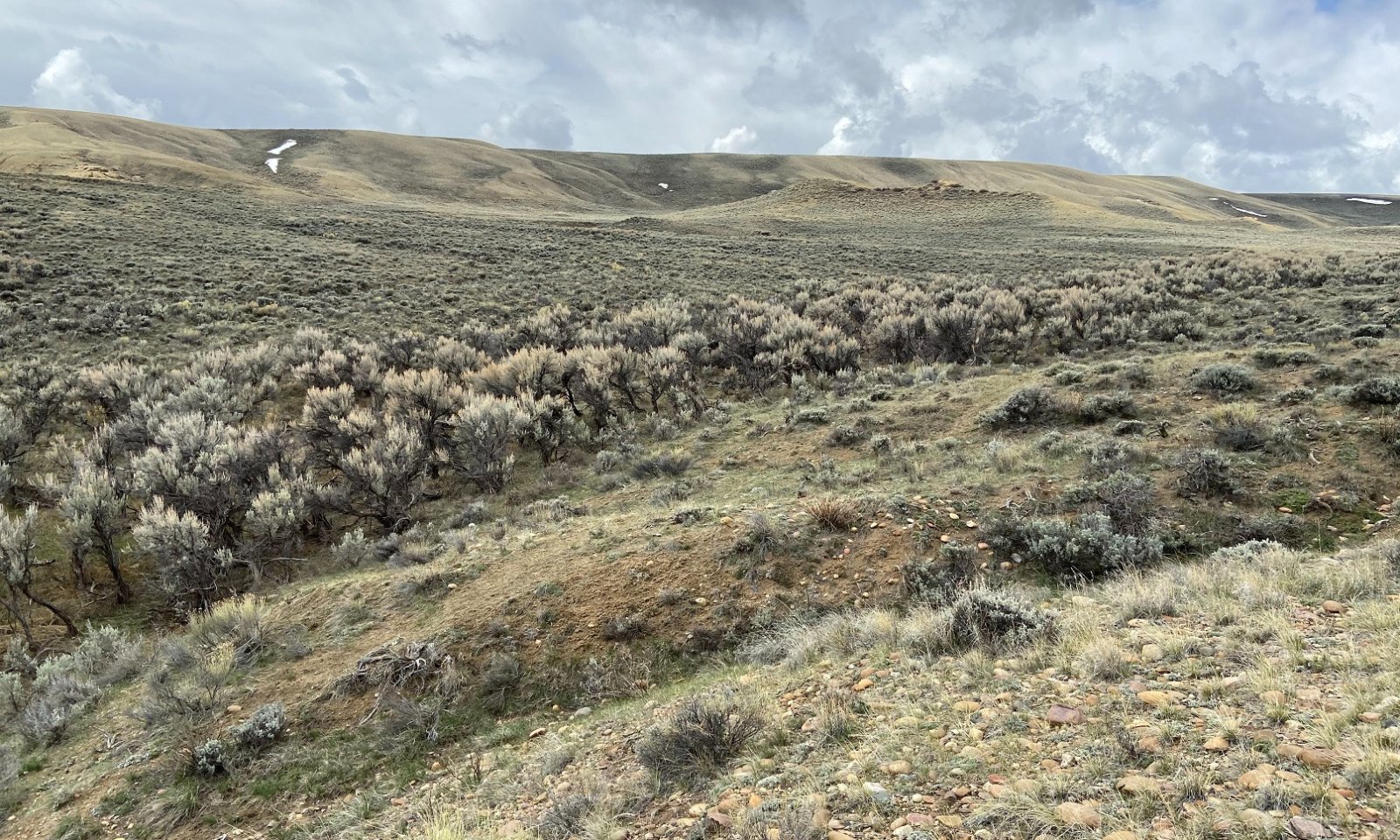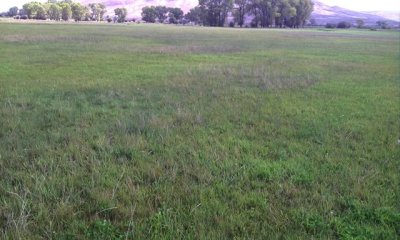
Overflow Pinedale Plateau (Ov PP)
List model
Circle-spoke model
Scenario model
Current land use
Select a land use
Management practices/drivers
Select a conversion
-
Conversion C1A
Flood irrigation, tillage, and seeding
More details -
Conversion C1B
vegetation and extreme soil disturbance (heavy equipment)
More details -
Conversion C3A
re-shaping/re-contouring; deep ripping; topsoil replacement; seedbed preparation; seeding; weed and grazing management
More details -
No conversion pathway between the selected land uses has been described
Target land use
Select a land use
Land use 1
Rangeland




Description
Rangeland is the dominant land use for this site and provides the most diverse ecosystem services. Range is land on which the historic and/or introduced vegetation is
predominantly grasses, grass-like plants, forbs or shrubs managed as a natural
ecosystem. Range may include natural grasslands, savannas, shrublands,
tundra, alpine communities, marshes and meadows.
Characteristics and indicators
This landuse consists of diverse native plant communities dominated by basin big sagebrush and perennial cool season grasses that provide for site stability, hydrologic function, and biotic integrity of the site.
Submodel
Description
This is a deep to very deep site with very few limitations for agriculture production, and therefore is often converted to irrigated pasture due to high water holding capacity, low slopes, and landscape position that lends itself to tillage and irrigation practices.
Pasture is land composed of introduced or domesticated native forage species that is used primarily for the production of livestock. Pastures receive periodic renovation and cultural treatments, such as tillage, fertilization, mowing/haying, weed control, and may be irrigated. Pastures are not in rotation with annual crops.
Characteristics and indicators
Plant communities can be very diverse with a mixture of native and non-native forage species or as a monoculture of a highly competitive forage grass such as creeping meadow foxtail. Hay production with aftermath grazing is the most common management scenario, but pastures on this site can also managed for grazing throughout the growing season with some dormant season grazing as well.
Submodel
Description
Land that is barren, sandy, rocky, or that is impacted by the extraction of natural
resources, such as minerals, gravel or sand, coal, shale, rock, oil, or natural gas.
Characteristics and indicators
This land use can be many things, but in this LRU is most often associated with oil and gas development.
Barren land. A land cover/use category used to classify lands with limited capacity to support life and having less than 5 percent vegetative cover. Vegetation, if present, is widely spaced. [NRI-87]
Typically, the surface of barren land is sand, rock, exposed subsoil, or salt-affected soils. Subcategories include salt flats; sand dunes; mud flats; beaches; bare exposed rock; quarries, strip mines, gravel pits, and borrow pits; river wash; oil wasteland; mixed barren lands; and other barren land. [NRI-92]
Submodel
Mechanism
Most range conversion to pasture occurred at the beginning of the 20th century through the use of horse-drawn implements and hand tools. Flood irrigation infrastructure was installed and introduced species, such as Kentucky bluegrass and clover, were planted. Wild flooding, or "Mountain Meadow Flooding," is the most common irrigation system which has little directional control and low efficiency. Land smoothing and land leveling are not common practices due to the potential of a thin topsoil or the economic cost for an area with such a short growing season. Because of the undulating natural surface, resulting microtopography ranges from 2.5cm to 20cm and sometimes greater. The field is over-irrigated to increase the water table, a practice called "sub-irrigating," or locally referred to as "getting the sub up," that results in hydrophytic vegetation and hydric soil development in the lower landscape positions. The goal with this irrigation system is to saturate the soil with enough water to supplement the higher areas. Over the years, willows have colonized the ditch systems and provide additional wildlife habitat. Late season return flow to streams are often cited as another added benefit to this type of system.
Mechanism
The conversion from Range to Other - Mineral Extraction Lands occurs when vegetation and soil is manipulated for the purpose of mineral extraction. Common practices are oil and natural gas pad and pipeline infrastructure, gravel pits, and road construction. Vegetation and topsoil is removed and topsoil is often stockpiled for on or off-site reclamation.
Mechanism
Conversion from Other - Mineral Extraction Lands to Range occurs, sometimes over a long period of time, as part of the reclamation and/or restoration process after mineral extraction. There is low potential for recovery without significant inputs of energy and resources, especially if topsoil has been removed.
Seed mixes that mimic an adjacent “reference area” rather than the site potential as described in the Reference State (1.1) will often result in a plant community resembling the Grazing Resistant State (1.2) due to inappropriate seed mixes and pre- and post-seeding grazing management that does not provide adequate recovery and periodic critical growth period rest.
Model keys
Briefcase
Add ecological sites and Major Land Resource Areas to your briefcase by clicking on the briefcase (![]() ) icon wherever it occurs. Drag and drop items to reorder. Cookies are used to store briefcase items between browsing sessions. Because of this, the number of items that can be added to your briefcase is limited, and briefcase items added on one device and browser cannot be accessed from another device or browser. Users who do not wish to place cookies on their devices should not use the briefcase tool. Briefcase cookies serve no other purpose than described here and are deleted whenever browsing history is cleared.
) icon wherever it occurs. Drag and drop items to reorder. Cookies are used to store briefcase items between browsing sessions. Because of this, the number of items that can be added to your briefcase is limited, and briefcase items added on one device and browser cannot be accessed from another device or browser. Users who do not wish to place cookies on their devices should not use the briefcase tool. Briefcase cookies serve no other purpose than described here and are deleted whenever browsing history is cleared.
Ecological sites
Major Land Resource Areas
The Ecosystem Dynamics Interpretive Tool is an information system framework developed by the USDA-ARS Jornada Experimental Range, USDA Natural Resources Conservation Service, and New Mexico State University.


